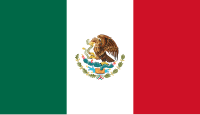
Photo from wikipedia
The white mullet Mugil curema supports several fisheries in the neotropic, nevertheless, the population structure is still elusive. The goal of this study was to assess the presence of adult… Click to show full abstract
The white mullet Mugil curema supports several fisheries in the neotropic, nevertheless, the population structure is still elusive. The goal of this study was to assess the presence of adult management units and nursery areas from five sampling sites throughout the Gulf of Mexico and northern Brazil using otolith microchemistry. The Li/Ca, Na/Ca, Mn/Ca, Sr/Ca, Ba/Ca, and Pb/Ca ratios were measured in otolith core (juvenile stage) and edge (adult stage) (N=131) by LA-ICPMS. Several ratios were significantly different between sampling sites for core and edge (p<0.05). For otolith edge, PERMANOVA showed significant differences (p<0.05) between all sampling sites from Mexico (except between Mecoacán and Tamiahua, p>0.05) and between Mexico (pooled samples) and Brazil. Quadratic discriminant analyses showed jackknifed classification higher in the edge (66.6% and 99.5% for Mexico and Brazil plus Mexico, respectively) than in the core (46.3% and 76.5% Mexico and Brazil plus Mexico, respectively). The two cluster analyzes based on the core microchemistry (Mexico and Brazil plus Mexico) produced three main clusters, which did not coincide with catchment areas. These results support the segregation of the M. curema adult life stages among several sampling sites from Mexico and Brazil, moreover, core analysis suggested that the nursery areas did not correspond to the capture sites or adults stocks. This article is protected by copyright. All rights reserved.
Journal Title: Journal of fish biology
Year Published: 2020
Link to full text (if available)
Share on Social Media: Sign Up to like & get
recommendations!